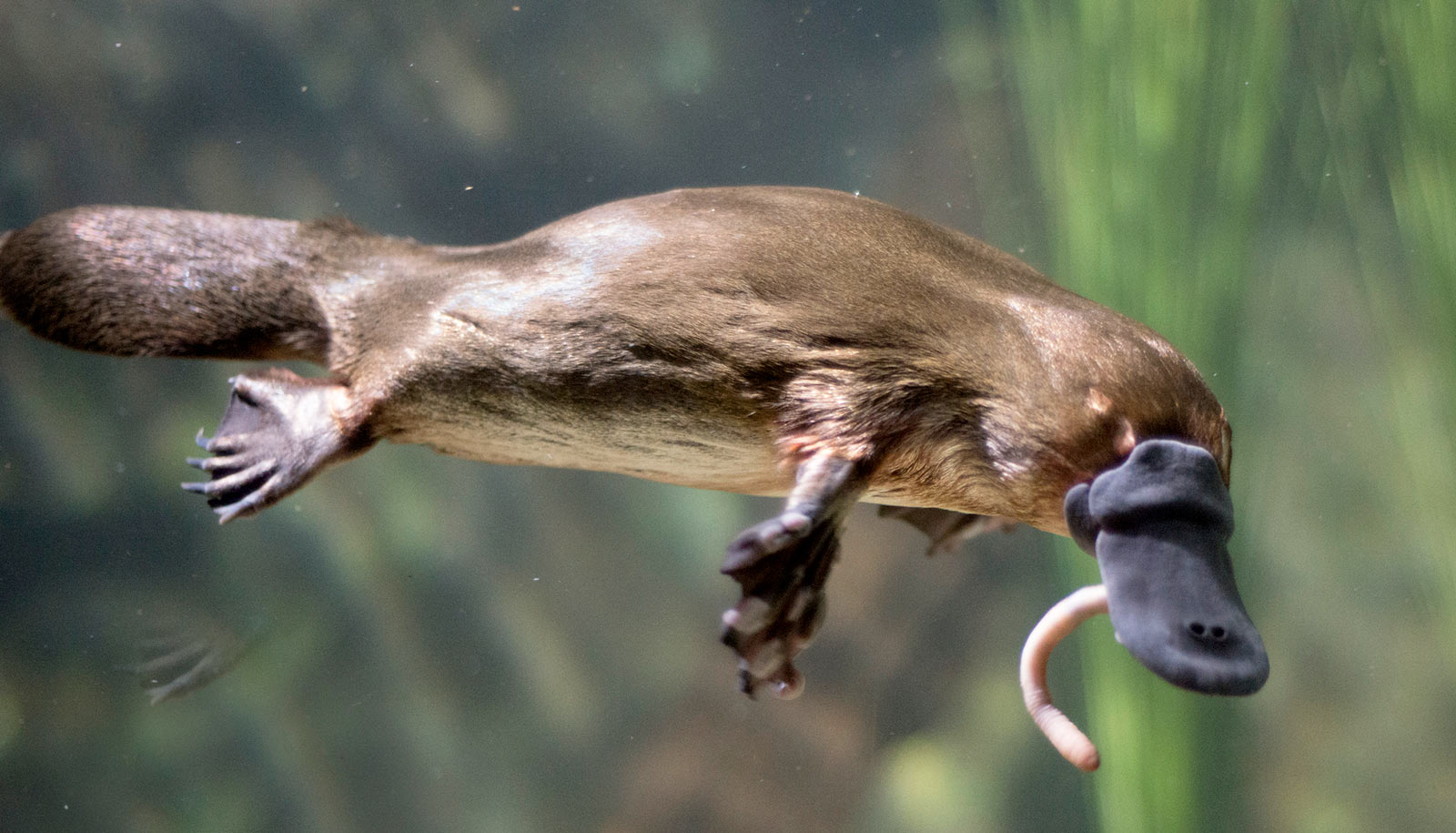

To feed their recently hatched young, platypus' milk must come into contact with the environment around it. Instead, milk is secreted through their pores like sweat. Because platypuses lay eggs instead of giving birth to live young, they don't have nipples. This protein fights bacteria that is found in the environment, but not bacteria that is found in the platypuses. Platypus milk contains a lactation protein that is able to fight off potent bacteria. Their diet and feeding behaviors, including the feeding of their young, are adapted to their semi-aquatic lifestyle.Australian biologists at the Commonwealth Scientific and Industrial Research Organisation (CSIRO) were able to isolate the monotreme lactation protein and have identified a three-dimensional fold that could lead to the development of a new type of antibiotic. It is important to note that platypuses are semi-aquatic animals and they spend much of their time in the water. During this time, the mother will continue to care for and protect the young, and will also teach them the necessary skills for finding food and surviving in the wild. The young platypuses will feed on the mother’s milk for several months until they are able to hunt and feed on their own. The milk produced by the mother is rich in protein and fat, providing the necessary nutrients for the growth and development of the young. The mother platypus has multiple nipples located on her belly, which are used to nurse the young. The eggs of the platypus hatch after about 10 days and the young are fed by the mother on her milk. Platypuses are monotremes, which are mammals that lay eggs instead of giving birth to live young. They then use their bill to grasp and swallow the prey whole. They dive to the bottom of the water to search for food, using their bill to detect the electrical signals given off by their prey. Platypuses are nocturnal animals and are most active at night, when they hunt for food in rivers and streams. Their unique bill structure, which is flat and duck-like, allows them to locate and capture food in the water. Platypuses are semi-aquatic animals that feed mainly on small invertebrates, such as insects and worms, as well as crustaceans and other aquatic animals. Their diet and feeding behaviors are adapted to their semi-aquatic lifestyle. As they mature, they will also feed on crustaceans and other aquatic animals. The milk produced by the mother is rich in protein and fat, providing the necessary nutrients for the growth and development of the young.Īfter a few months, the young platypuses will begin to forage for food on their own, feeding on a diet that primarily consists of small invertebrates such as insects and worms. The mother platypus has multiple nipples on her belly, which are used to nurse the young.

After the eggs hatch, the young platypuses feed on the mother’s milk for several months until they are able to hunt and feed on their own. Platypuses are monotremes, which are mammals that lay eggs rather than giving birth to live young. After birth, the young platypus will feed on the mother’s milk for several months until they are able to hunt and feed on their own.

Unlike most mammals, the female platypus has multiple nipples, which are located on her belly and can be used to nurse multiple young at once. The milk of the platypus is rich in protein and fat, which provides the necessary nutrients for the growth and development of the young. Platypus feeding young are mammals and produce milk to feed their young. Platypus milk feeding and platypus feeding young


 0 kommentar(er)
0 kommentar(er)
